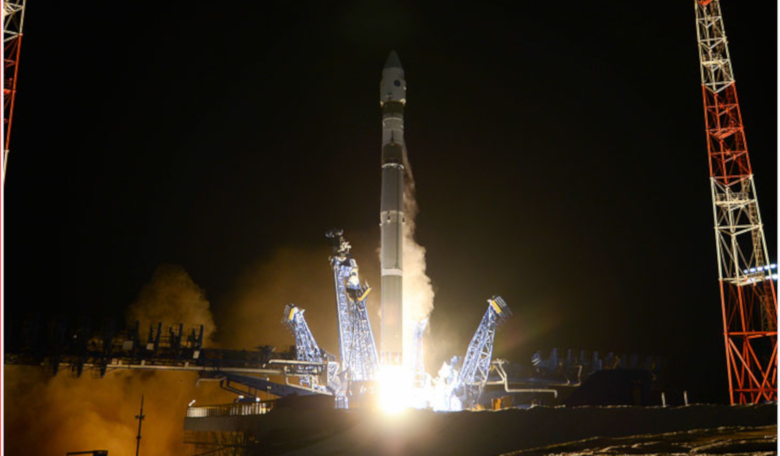A top secret Russian military satellite designed to monitor other satellites in space was launched into orbit on Monday onboard a modified Soyuz rocket, said officials at the country’s Defence Ministry.
The mission lifted off from the Site 43 launch complex at the Plesetsk Cosmodrome, which is roughly 800 kilometres (500 miles) north of Moscow, at 17:52 GMT (16:52 Moscow time) Monday.
"The spacecraft created on the basis of a unified multifunctional space platform has been put into the target orbit, from where the state of domestic satellites can be monitored", the Ministry said in the early hours of Tuesday.
The ministry also said that the satellite is equipped with a special optical instrument, which will allow it to take pictures of the Earth's surface.
Russian authorities chose not to announce the launch of the classified payload beforehand, but instead issued airspace warning notices informing pilots of potential payload fairing drop zones incase rocket pieces fell away from the Soyuz as it passed through each launch stage.
These notifications for air traffic to avoid areas of the Arctic Ocean north of the Kola Peninsula and south of the Spitsbergen Archipelago and for a large swath of the Pacific Ocean suggest that the modified rocket was heading north for a near-polar orbit.
Over time, this north-south flight path would allow the satellite to observe the majority of the planet after several orbits.
This is possibly not the only Russian satellite fitted out with orbital inspection capabilities to have made its way into space on a clandestine mission. According to russianspaceweb.com, a website run by the respected Russian space journalist Anatoly Zak, similarities have been flagged up between Monday’s launch and a Soyuz 2-1v flight in June 2017 that was part of the Nivelir project. Shrouded in mystery at the time like this week's launch, this flight also released a similarly-secretive payload into orbit.
The Nivelir project officially got underway in September 2011 and has since launched four other satellites, Cosmos-2491, 2499 and 2504 in 2013, 2014 and 2015 respectively.
The fourth, Cosmos-2519, was launched on a Soyuz-2-1v rocket on 23 June, 2017.
The satellite is a product of the NPO Lavochkin design bureau, best known as a manufacturer of scientific satellites and deep space probes.
It may be used for Earth remote sensing and/or long-distance observations of other objects in orbit, writes Bart Hendrickx, a long-term observer of the Russian space program who has written extensively on Soviet/Russian space history for the past 25 years.











